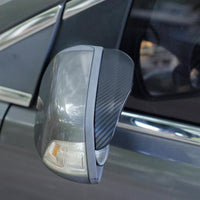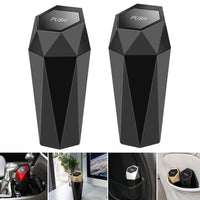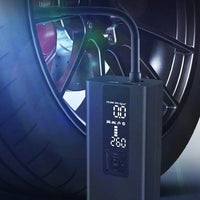Despite supply difficulties and COVID-19, over 280 million electric mopeds, scooters, motorcycles, and three-wheelers are currently on the road. Let’s take a look at the "five emerging EV trends observed in 2022.
Rising Demand for EV Battery Basic Materials
As the demand for electric vehicles rises throughout the world; the supply chain is finding it increasingly difficult to keep up. In particular, acquiring and refining essential raw minerals like lithium, nickel, and cobalt can be challenging. SupplyChainDive reports that current lithium market prices cannot justify the cost of extraction. There are also only a small number of refineries capable of processing nickel. Building a self-sufficient supply chain to back battery trash recycling and rescue is the best way to cope with these issues. If raw materials could be salvaged from landfills, less of an emphasis on mining would be required.
The delay in producing the cells used to create the batteries is another issue of worry. Battery cells in EVs are thousands in number, as opposed to the one cell needed for a cellphone. For an industry that takes such pride in sustainability, it is crucial that there be a robust regional battery supply chain since this reduces transportation emissions across the supply chain.
Cell-to-Module to Cell-to-Pack Battery Pack Designs
Producers of electric vehicles are looking for ways to increase the energy density in a smaller and lighter package. Simplicity and low cost are key priorities for them. Currently, original equipment and battery manufacturers are exploring short-term and long-term solutions, such as attaching individual cells to the cooling plate. Cell-to-pack (CTP) design is gaining popularity because it maximises volume usage, decreases the number of components, boosts pack energy density, and allows manufacturers to employ cheaper, lower energy density cells.
By removing the module housing and halving the amount of thermal contact materials, CTP drastically reduces the thermal resistance of the stack. This allows the use of gap fillers with a lower conductivity, which reduces the cooling or heating loads on the cooling plate.
IDTechEX claims that OEMs have started the switch to CTP. Adapting thermal techniques and materials, such as thermal interface materials, coolant channels, and fire protection, is necessitated by this structural change in EV battery pack. Parker Lord is in the forefront of developing thermally conductive (TC) adhesives for the next generation of CTP arrangements, which are necessary for the viability of these systems.
Focus on Faster EV Charging
The need for rapid charging will skyrocket as millions of electric vehicles join the roads during the next decade. There is a need for differentiation among charge point operators (CPOs) if they are to survive in the market. McKinsey & Company reports that CPOs, notably in the United States and Europe, are coming up against stiff competition from a wide variety of new entrants and sorts of enterprises, such as energy corporations and car OEMs.
CPOs will need to put a lot of money into a dependable infrastructure that can provide more than 150 kilowatts of power each hour. CPOs will also need to provide exceptional customer service, increase demand via partnerships, strategically extend their networks, employ creative strategies to maximise throughput, and discover new sources of revenue that are not directly related to energy. Those that do so will be ahead of the curve in an area that is poised to play a significant role in transportation in the near future.
Non-Passenger Vehicle Electrification
The need for rapid charging will skyrocket as millions of electric vehicles join the roads during the next decade. There is a need for differentiation among charge point operators (CPOs) if they are to survive in the market. McKinsey & Company reports that CPOs, notably in the United States and Europe, are coming up against stiff competition from a wide variety of new entrants and sorts of enterprises, such as energy corporations and car OEMs.
CPOs will need to put a lot of money into a dependable infrastructure that can provide more than 150 kilowatts of power each hour. CPOs will also need to provide exceptional customer service, increase demand via partnerships, strategically extend their networks, employ creative strategies to maximise throughput, and discover new sources of revenue that are not directly related to energy. Those that do so will be ahead of the curve in an area that is poised to play a significant role in transportation in the near future.
Fourthly, expanding the scope and future of electrification to include non-automotive transport
Cities are implementing legislation and incentives to hasten the transition to sustainability in response to pressing challenges like as pollution, congestion, and safety (McKinsey & Company). Meanwhile, the mobility sector is stepping up with a slew of game-changing technologies tailored to urban streets, including mobility-as-a-service, cutting-edge traffic management and parking systems, freight-sharing solutions, and two- and three-wheeled modes of transport. There is an increasing need for transportation options apart from the conventional car, and one such option is the electric scooter. Electric scooters are easy to ride, quick to accelerate, and efficient in terms of both fuel and carbon emissions. Since the price of EV technology has dropped, not only are e-scooters cheaper to ride than conventional forms of transportation, but the initial investment and ongoing maintenance expenses for owners are also much lower.
Electronic mobility is expanding beyond conventional modes of transportation. Electric airplanes are taking off in a big way right now. Electroflight, a Parker Lord client, exemplifies this with their "Spirit of Innovation." This achievement, though, is only the start. The global market for electric airplanes is expected to increase to $27.7 billion by 2030, according to projections. The increasing need for airplanes that are both environmentally friendly and silent is driving this growth. Despite setbacks like the beginning of the pandemic and the requirement for larger energy-density batteries, electric flying looks to be growing into the next year and beyond.
In a similar vein, the future of marine transportation appears to be electric. Rasso Bartens chlager estimates that emissions from shipping make up around 3% of all transportation-related carbon dioxide emissions. Electric maritime equipment is being pushed as a solution by both governments and businesses indicating increasing electrification trends. When it comes to electric drivelines, Volvo Penta is at the forefront of the industry, which is why the business is at the forefront of the movement to electrify marine equipment. Volvo Penta and ZEM, a marine battery business, have joined forces with the purchase of Volvo Penta.
As the whole supply chain undergoes a radical disruption, it will be crucial for conventional component players to be prepared for this shift toward e-mobility and to react swiftly (McKinsey & Company). By 2030, it's expected that electrification-related components (such as batteries and electric motors) and self-driving technology would account for around 52% of the overall market size.
 :
:  :
: 



















